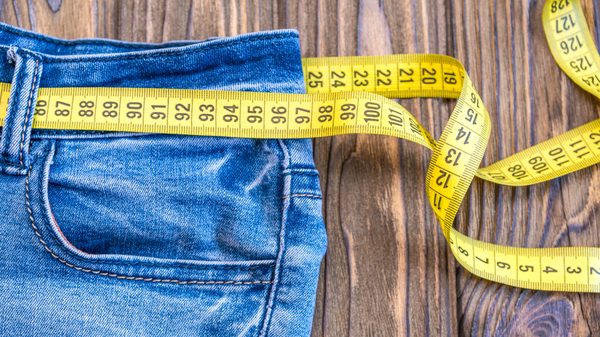When the body is exposed to the sun, vitamin D is formed within the body. Different foods or supplements can be used to gain vitamin D in a person.
For improving and maintaining the health of bones and teeth, vitamin D is necessary for the body. It also helps to protect against different diseases and disorders like type 1 diabetes.
Although the name suggests that vitamin D is a vitamin, it is not, but rather a precursor or prohormone of a hormone.
Vitamins must be gained through a person’s diet; it cannot be synthesized within the body. But vitamin D can be produced by the body.
This article goes through the uses of vitamin D and what happens if we lack it, and what measures to take to keep its amount normal through the intake.
Why is vitamin D important?
Even though it is labeled as a “vitamin” (i.e., a nutrient is taken from diet), it is still not really a vitamin.
When the skin gets exposed to the UVB rays of the sun, the body synthesized it using cholesterol, making it act more like a hormone.
About 2000 genes are regulated by vitamin D, which has been calculated, making it a lot of critical operation that occurs in the body.
Many health conditions are related to this nutrient, including those of bones and muscle health, brain health, pregnancy, immune activity, cardiovascular functions, and many more.
Lack of vitamin D can lead to a number of disorders and health issues, with about 42% of American adults being deficient in it. A few of the health aspects affected by vitamin D are mentioned below.
Vitamin D benefits and the consequences of deficiency
Usually, people associate vitamin D with their bones and think in this regard. Many varieties of minerals like sodium, phosphorus, calcium, and magnesium can be balanced due to this vitamin, leading to mineralization and healthy bone formation.
Even though skeletal health is maintained using vitamin D, its uses, however, encompasses more than just the bones.
Due to the large quantities of minerals present and with vitamin D receptors in the body, it contributes, directly or indirectly, to a number of physiological functions.
For example, a number of its functions include maintaining immune activity, acting as an antioxidant, regulating cardiovascular health, maintaining blood sugar balance, enhancing neurotransmitter synthesis, and many more.
Vitamin D gained through sun, food, or supplements are in an inactive form. It is first to move to the liver where it is transformed into 25(OH) vitamin D and then transported to the kidney where it is activated to form 1.25(OH)2 vitamin D.
The activated form of vitamin D then travels throughout every organ present in the body. Many organs like lungs, kidney, pancreas, intestine, thyroid, etc., contain vitamin D receptors, so; vitamin D plays a role in their functions and health.
Some organs that function by utilizing vitamin D are mentioned below, and the negative consequences of vitamin D deficiency in some health conditions.
Benefits of Vitamin D
1. Healthy bones
Calcium and phosphorus levels within the blood are maintained with the help of vitamin D.
These components are useful in forming healthy bones. Vitamin D is needed for the body to activate and reabsorb the calcium, which would otherwise be eliminated from the body through the kidney.
Vitamin D deficiency causes rickets, a condition marked by the softening of bones, which causes a bowlegged appearance. Likewise, deficiency of vitamin D forms softening of bones or osteomalacia in adults. It is characterized by weak muscles and poor bone density.
2. Reduced risk of flu
Current researches in the 2018 review showed that vitamin D works to protect against the influenza virus. But, different authors also studied similar researches regarding how vitamin D showed no effects on flu or the risks associated with it.
More research is required to obtain clear results on the protective effects of vitamin D on the flu.
3. Healthy infants
Many children suffer from high blood pressure due to deficiency of vitamin D. A relation between the rigidness of children’s arterial walls and insufficient amounts of vitamin D levels was found in the 2018 study.
As shown by data obtained from the American Academy of Allergy Asthma and Immunology (AAAAI) that refers to a relation between the elevated level of allergic sensitization and low vitamin D exposure.
An example related to this are children who live near the equator and do not have high admission rates of the hospital due to allergies, plus scarcely any prescriptions of epinephrine autoinjectors.
They would also have low rates of peanut allergy. Moreover, vitamin D can improve the anti-inflammatory effects of glucocorticoids. So, people having steroid-resistant asthma can make use of it as a supportive therapy.
4. Healthy pregnancy
A review of 2019 theorized that vitamin D deficiency in pregnant ladies might lead to increased risks of preterm births or preeclampsia. Pregnant women deficient in vitamin D may also suffer from bacterial vaginosis and gestational diabetes.
In a study of 2013, it was noted by the researchers that increased levels of vitamin D if occurs in pregnancy can cause elevated risk of food allergy in the starting two years of a child’s life.
5. Vitamin D and immunity and respiration
As vitamin D shows an important role in maintaining the immune system, it also shows beneficial effects on conditions like acute and chronic respiratory complications and works to decrease any symptoms that may occur due to it.
Like, they were taking adequate amounts of vitamin D minimizes the risk of respiratory issues and risks in adults and children.
Research shows that pregnant women administered with 4,400 IU of vitamin D every day are less likely to develop any respiratory issues in their newborn to three-year-old kids, as opposed to those pregnant ladies administered with 400 IU each day.
6. Vitamin D and cardiovascular health
Vitamin D functions to improve respiratory function as well as cardiovascular functions of the body, which helps in decreasing risks and complications associated with heart and blood vessels.
For example, it was observed by the researchers that a variety of doses of vitamin D supplementation every day (i.e., 600 IU, 2000 IU, 4000 IU) helps in removing rigidness of blood vessels after using for eight weeks, as compared to the placebo.
A dose-response relationship in vitamin D and its influences was noted down, which meant that consuming more vitamin D resulted in the wellbeing of blood vessel structure in the body.
7. Vitamin D and metabolism
Vitamin D is responsible for many metabolic processes occurring within the body, including many results showings that it has a hand in maintaining blood sugar imbalances and any metabolic complications. Various metabolic and cardiovascular abnormalities result in an increased risk of obesity.
Research suggests that people with obesity are most likely those who are deficient in vitamin D (But less likely in people who are overweight) and those having abnormal blood-sugar balance.
Evidently, the relation between vitamin D and metabolic complication is seen in dose-dependent; a good balance of vitamin D present means a decreased rate of abnormal imbalances.
How much is Vitamin D essential?
The recommended amount of Vitamin D is proposed by federal and research institutions and by scientists. The recommended amount of Vitamin D is:
- Children of 12 months need 400 IU of vitamin D.
- Children of more than one year and adults up to 70 years need 600 IU of Vitamin D.
- People of more than 70 years need 800 IU of vitamin D.
Sources and forms of vitamin D
Vitamin D from sunlight
The strongest factor in synthesizing vitamin D is sunlight. Approximately 10,000-20,000 IU of vitamin D is produced from exposing your body fully (wearing only a bathing suit) for about 20 minutes in the sun.
Dietary sources of vitamin D
Since many factors are involved in producing considerable amounts of vitamin D by the skin, still more amount of vitamin D is required, which is obtained through the diet.
Organic food sources of vitamin D3 (known as cholecalciferol, vitamin D, which is animal-based) are egg yolks, fatty fish, and cod liver oils. Shiitake mushrooms are an excellent source of vitamin D2 (known as ergocalciferol, vitamin D based on plant source).
Supplements: Which form of vitamin D is best?
Supplements are essential for those people who are not able to get sufficient amounts from diet or sun exposure. Vitamin D2 and vitamin D3 are the two types of vitamin D used as supplements.
They vary in their structure and sources. Both types of vitamin D are transformed into calcitriol [25(OH) vitamin D], the form of vitamin D, which is measured in a person’s blood to check their vitamin D level.
There has been proof that as compared to vitamin D2, vitamin D3 is more likely to maintain normal levels of vitamin D in the blood.
Vitamin D2 is preferred by those who are vegetarians and want plant source-based vitamin D for supplementation instead of animal-based vitamin D3.
For those demanding plant-based vitamins, a form of vitamin D3 is available made from lichen, fungi, and algae plant-like organisms.
Forms of D2 or D3 or a mixture of both are present as multivitamins, which consist of 400, 500, or 1000 IU vitamin D. A separate vitamin D supplement is present as vitamin D3 form in values of 400-50,000 IU.













